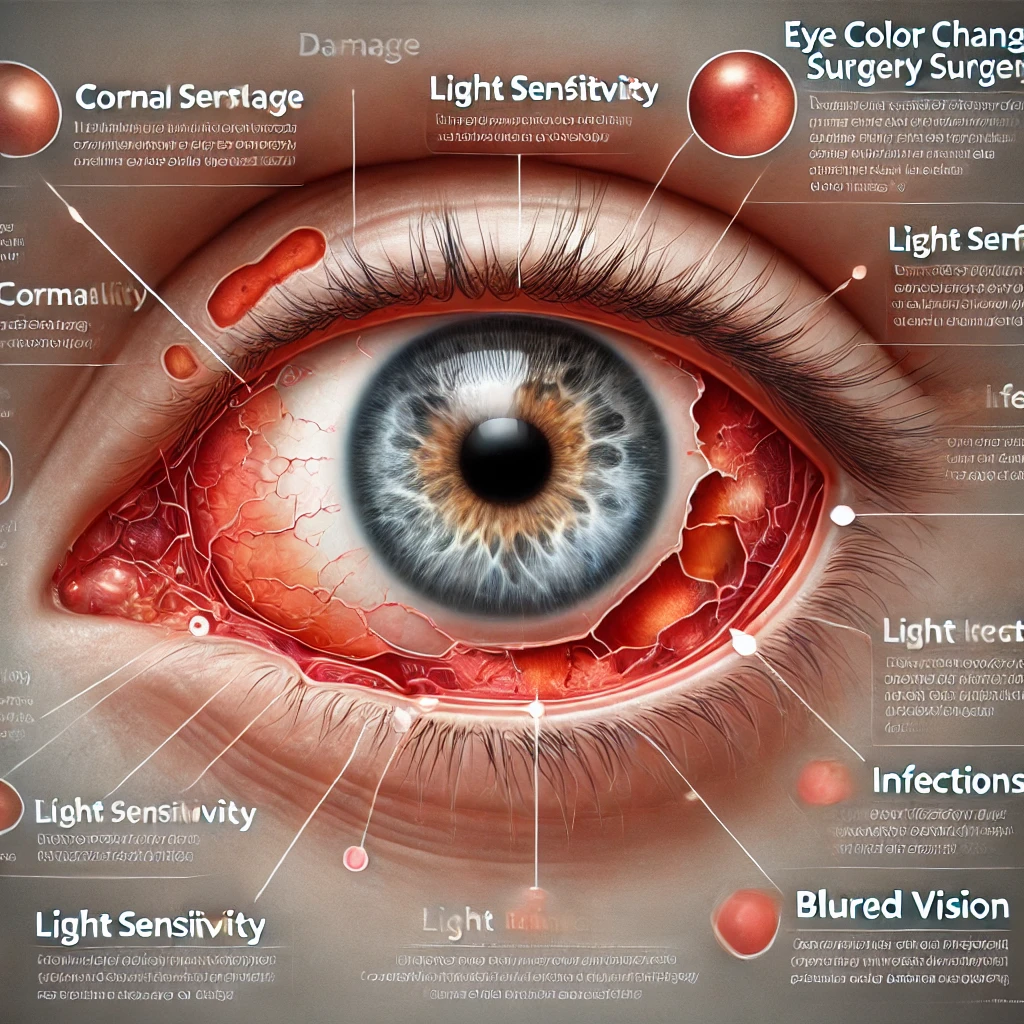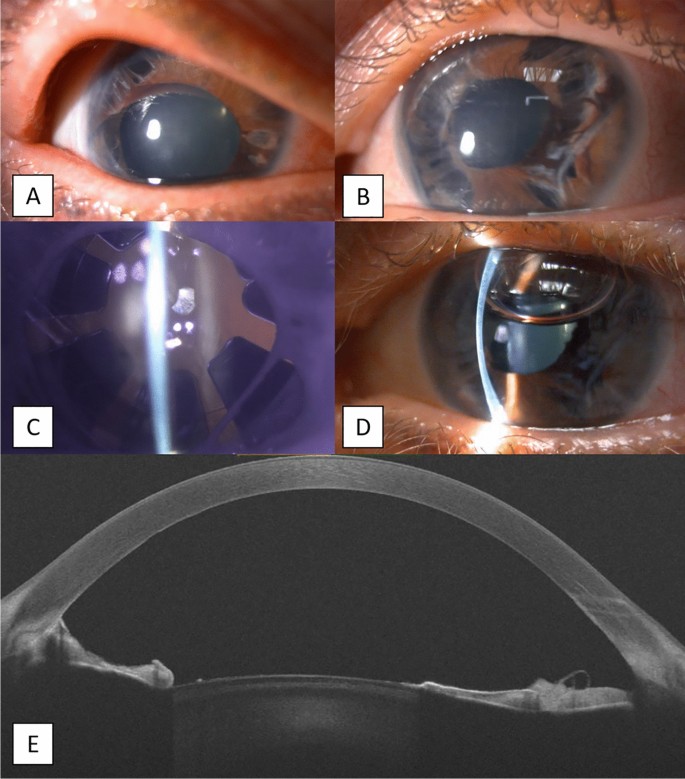Cosmetic Eye Color Change Surgery Safety: Understanding the Risks and Reality

- The Medical Community's Urgent Warning
- Understanding Eye Color Change Surgery Types
- Real-World Complications: What Medical Studies Reveal
- Global Medical Response and Regulatory Status
- Long-Term Consequences: Years of Complications
- Safe Alternatives: Colored Contact Lenses
- Making an Informed Decision: Questions to Ask
- The Bottom Line: Expert Recommendations
- FAQ: Cosmetic Eye Color Change Surgery Safety (2025)
With stunning before-and-after photos flooding social media platforms, cosmetic eye color change surgery has captured the imagination of millions seeking dramatic aesthetic transformations. But behind those captivating blue and green eyes lies a concerning reality that medical professionals are urgently warning the public about. Is cosmetic eye color change surgery safe? The answer from leading ophthalmologists worldwide is a resounding no.
The Medical Community's Urgent Warning
In January 2024, the American Academy of Ophthalmology (AAO), the world's largest association of eye doctors, issued a stern warning about cosmetic eye color change procedures. Their message was clear: these surgeries "carry serious risks for vision loss and complications" that patients must understand before considering these procedures.
Dr. JoAnn A. Giaconi, clinical spokesperson for the AAO, emphasized the gravity of the situation: "No surgery is free of risk. With purely cosmetic surgeries on the eye, it's just not worth the risk when it comes to your good vision."
This warning comes as social media trends have sparked unprecedented interest in permanent eye color change, with procedures trending on platforms like TikTok and Instagram. However, the reality behind these transformations is far more complex and dangerous than social media suggests.
Understanding Eye Color Change Surgery Types
Currently, there are three main types of cosmetic eye color change procedures being performed worldwide, each carrying distinct risks and complications:
1. Iris Implant Surgery: The Most Controversial Option
Iris implant surgery involves inserting an artificial iris made of silicone over the natural iris through a surgical incision at the edge of the cornea. While the FDA has approved iris implants for medical conditions like iris defects from injury or birth defects, their cosmetic use remains highly controversial and dangerous.

Is iris implant surgery safe? Medical evidence suggests it is not. A comprehensive study published in the American Journal of Ophthalmology examined 24 eyes in 12 patients who received cosmetic iris implants. The results were alarming: complications included iris abnormalities in 45.8% of cases, elevated eye pressure in 33.3%, corneal swelling in 25%, and inflammation in 20.8% of patients American Journal of Ophthalmology.
Eye color change risks from iris implants include:
- Permanent vision loss or blindness
- Glaucoma from elevated eye pressure
- Cataracts requiring surgical removal
- Severe light sensitivity
- Corneal damage potentially requiring transplantation
- Chronic inflammation and pain
- Need for multiple corrective surgeries
2. Keratopigmentation (Corneal Tattooing): The Social Media Sensation
Keratopigmentation, also known as corneal tattooing or eye tattooing, has gained massive popularity on social media. This procedure uses needles or lasers to create channels in the clear cornea, into which colored pigments are injected.
Side effects of eye color change surgery via keratopigmentation:
- Corneal damage leading to cloudiness and vision loss
- Bacterial or fungal infections causing permanent scarring
- Adverse reactions to injected dyes
- Uneven pigment distribution creating an unnatural appearance
- Pigment leakage into the eye
- Color fading over time
- Permanent inability for doctors to properly examine the eye
3. Laser Melanin Removal: Unpredictable Results
Risks of laser eye color change through melanin removal include the release of pigment particles that can clog the eye's drainage system, leading to dangerous pressure buildup and glaucoma. Additionally, the final eye color is unpredictable and may not match expectations.
Real-World Complications: What Medical Studies Reveal
Recent medical literature paints a disturbing picture of cosmetic eye color surgery outcomes. Research published in BMC Ophthalmology documented long-term complications in patients with cosmetic iris implants, finding that many required multiple surgeries to address severe complications BMC Ophthalmology.
Dr. Nicole Bajic from Cleveland Clinic reports, "I have yet to hear of someone doing well from one of these cosmetic implants." This stark assessment reflects the medical community's growing concern about these procedures.

Global Medical Response and Regulatory Status
The medical community's response to cosmetic eye color surgery has been overwhelmingly negative. Major ophthalmological societies worldwide have recommended that cosmetic iris implantation be banned due to "substantial risks and lack of therapeutic value."
Key regulatory facts:
- No cosmetic eye color change procedure has FDA approval in the United States
- Many countries have banned or restricted these procedures
- Professional medical societies universally advise against cosmetic eye color surgery
- Procedures are often performed "off-label" without proper regulatory oversight
Long-Term Consequences: Years of Complications
Perhaps most concerning is that complications from cosmetic eye color surgery can persist for years after the initial procedure. The UCLA study found that adverse effects continued for an average of nearly three years after implant removal, with many patients requiring ongoing medical care American Journal of Ophthalmology.
Long-term complications include:
- Permanent vision impairment
- Ongoing glaucoma requiring lifelong treatment
- Native iris damage that cannot be repaired
- Chronic inflammation
- Need for multiple corrective surgeries
- Psychological impact from unsatisfactory results
Safe Alternatives: Colored Contact Lenses
The medical community unanimously recommends colored contact lenses as the only safe way to change eye color. When properly fitted and prescribed by a qualified eye care professional, colored contacts can provide the desired aesthetic change without surgical risks.
Benefits of colored contacts over surgery:
- Completely reversible
- No surgical risks
- Wide variety of colors available
- Professional monitoring ensures eye health
- Cost-effective compared to surgery
- Immediate results without recovery time
However, experts warn against purchasing costume or novelty contacts online, as these unregulated products can cause serious eye infections and corneal damage.
Making an Informed Decision: Questions to Ask
If you're considering cosmetic eye color change, medical professionals recommend asking these critical questions:
- What are the specific risks for my eyes?
- How many of these procedures has the surgeon performed?
- What is their complication rate?
- What happens if complications arise?
- Is the procedure reversible?
- What are the long-term follow-up requirements?
The Bottom Line: Expert Recommendations
The overwhelming medical consensus is clear: cosmetic eye color change surgery poses unacceptable risks for purely aesthetic purposes. Leading ophthalmologists worldwide advise against these procedures, citing the potential for permanent vision loss, chronic complications, and the need for multiple corrective surgeries.
As social media continues to glamorize these transformations, it's crucial to understand that the reality often involves months or years of medical complications, multiple surgeries, and potentially permanent vision problems. The pursuit of beautiful eyes should never come at the cost of sight itself.
For those seeking to change their eye color, colored contact lenses remain the only medically recommended option. While they may not provide the permanent change that surgery promises, they offer a safe, reversible way to achieve the desired aesthetic without risking one of your most precious senses.
Remember: Your vision is irreplaceable. No cosmetic change is worth the risk of permanent sight loss or years of medical complications. Always consult with a qualified ophthalmologist before considering any eye-related procedure, and prioritize your long-term eye health over short-term aesthetic desires.
FAQ: Cosmetic Eye Color Change Surgery Safety (2025)
This article is for informational purposes only and should not replace professional medical advice. Always consult with a qualified ophthalmologist for personalized medical guidance regarding eye health and procedures.

Leave a Reply